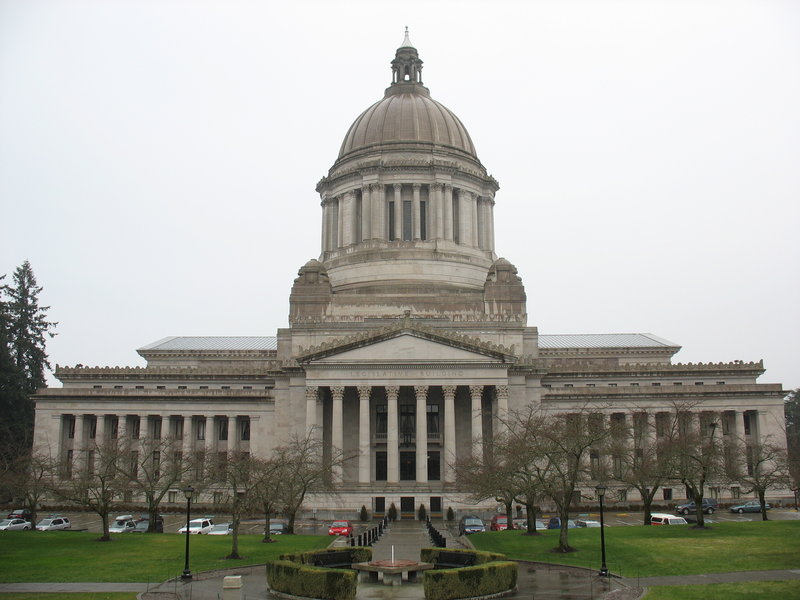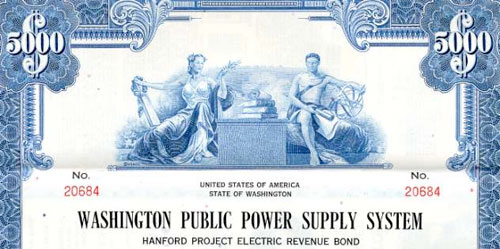
Blog
-
Geiger Readings for March 11, 2014
Ambient office = 103 nanosieverts per hourAmbient outside = 86 nanosieverts per hourSoil exposed to rain water = 95 nanosieverts per hourYellow bell pepper from Central Market = 63 nanosieverts per hourTap water = 71 nanosieverts per hourFiltered water = 51 nanosieverts per hour -
Nuclear Reactors 107 – Washington State Bill 5991 to Consider New Reactors for State 4
I have blogged recently about SSB 5991, a bill working its way through the Washington State legislature. The bill calls for studying how to develop new nuclear power generation to add to the Washington State electricity supply. As I wrote the last post about the bill, it had passed the State Senate and was being considered in the house. The bill was amended by the House Committee On Technology & Economic Development (HCTED) during their consideration.
One of the things that offended me about the original bill was that it started with the bald statement that nuclear power was known to be “a safe, reliable, cost-effective, and carbon-free source of electricity.” I pointed out in one of my posts that nuclear power was not “a safe, reliable, cost-effective, and carbon-free source of electricity.” Other critics of the bill say the same thing. Washington State Senator David Frockt (D-Seattle) said that the bill was starting with assumptions that should rather be possible conclusions of the study called for.
State Senators from the Hanford area supported the bill as did a spokesman for Energy Northwest which operates the only nuclear power reactor in Washington. During discussions of the bill in the Senate, the idea was circulated that any new reactors could/should be located at Hanford. Representatives of the Hanford area and the owners of the Hanford reactor have obvious motivations of bringing new jobs and revenue to their area. Energy Northwest has been promoting long ranges plans to develop additional nuclear power in Washington since 2009 and they have settled on the new small modular reactors as the best choice but this technology is unproven.
The opponents of SSB 5991 have questioned the need for new nuclear power in Washington State as opposed to alternatives such as conservation and/or renewable sources such as solar and wind, both of which are plentiful in the Hanford area. Critics said that there were not enough public hearings called for in the bill and demanded more hearings be scheduled in Seattle, Spokane or Vancouver. There was also a call for the inclusion of planning for nuclear accidents in any such bill.
The amended bill was read and a vote was taken. The faction that voted to pass the bill to the full House as amended won over another group that did not want to pass the bill to the full House for a vote. The last milestone in the official history of the bill on the Washington State website is that the bill will be referred to the House Rules Committee for a second reading. I met with a member of the Washington State House yesterday and asked him about the bill. He said, “We killed it.” I am not sure whether the bill was killed in the Rules Committee or the full House voted it down but I am happy to learn that the bill is dead. Nuclear energy is not a good choice to supply future electricity to the State.
Washington State Capitol:
-
Radiation News Roundup March 10, 2014
Sailors who were on the aircraft carrier Ronald Regan say that radiation levels routinely exceeded 300 times normal for over a month far away from Fukushima. enenews.com
The front edge of the ocean plume from Fukushima ahs arrived in the Gulf of Alaska. enenews.com
A recovery process has started at the Waste Isolation Pilot Plant (WIPP) with the aim of resuming operations. world-nuclear-news.com
A Bechtel-led consortium is preparing to assume management of the Y-12 and Pantex sites after more than a year of appeals from their previous contractor. nuclearstreet.com
-
Geiger Readings for March 10, 2014
Ambient office = 111 nanosieverts per hourAmbient outside = 108 nanosieverts per hourSoil exposed to rain water = 113 nanosieverts per hourRed bell pepper from Central Market = 116 nanosieverts per hourTap water = 161 nanosieverts per hourFiltered water = 151 nanosieverts per hour -
Geiger Readings for March 9, 2014
Ambient office = 119 nanosieverts per hourAmbient outside = 104 nanosieverts per hourSoil exposed to rain water = 92 nanosieverts per hourCarrot from Central Market = 68 nanosieverts per hourTap water = 119 nanosieverts per hourFiltered water = 112 nanosieverts per hour -
Geiger Readings for March 9, 2014
Ambient office = 119 nanosieverts per hourAmbient outside = 104 nanosieverts per hourSoil exposed to rain water = 92 nanosieverts per hourCarrot from Central Market = 68 nanosieverts per hourTap water = 119 nanosieverts per hourFiltered water = 112 nanosieverts per hour -
Geiger Readings for March 8, 2014
Ambient office = 87 nanosieverts per hourAmbient outside = 113 nanosieverts per hourSoil exposed to rain water = 110 nanosieverts per hourHass avacado from Central Market = 73 nanosieverts per hourTap water = 104 nanosieverts per hourFiltered water = 85 nanosieverts per hourFinnish Salmon – PCaught in USA = 133 nanosieverts per hour -
Nuclear Reactors 106 – Washington Public Power Supply System History 2
My last post had to do with early Washington Public Power Supply System(WPPSS) history up to the 1970s. Today I am going to continue with the history of WPPSS.
In 1982, WPPSS halted the construction of two of the planned nuclear reactors. The projected costs of completing all five of the new reactors had risen from an estimated sixteen billion dollars to twenty four billion dollars. When the two reactors were cancelled, WPPSS was forced to default on two billion two hundred fifty thousand dollar worth of bonds that had been issued to cover the cost of construction. With the biggest bond default the country had ever seen, the utilities and the ratepayers had to repay the bond holders. Two more of the WPPSS reactors were never completed. Their costs were borne by the Bonneville Power Administration(BPA) with proceeds of hydroelectric dams on the Columbia River. Ultimately, of course, the BPA customers paid for the cancelled reactor construction.
After thirteen years of litigation, the various lawsuits were settled for seven hundred and fifty three million dollars. Some of the over seventy five thousand bond holders recovered forty cents of every dollar they had invested. Other investors only got ten cents for every dollar invested. It turned out that money allocated for the second two reactors were spent on the last two which further complicated the settlement of the bond default. Seattle owed fifty million dollars, forty three million of which was paid by insurance companies. The last of the settlements took place in 1995.
The only reactor to be completed by WPPSS of the five that had been planned was located at Hanford. It is now called the Columbia Generation Station. It currently supplies about twelve percent of the electricity sold by the BPA. The other four plants that were never completed were mothballed in case it was decided to finish them at some future time. In 1995, WPPSS decided that it would demolish the work that had been completed.
In 1998, WPPSS was renamed Energy Northwest. The reason for the name change was the concern that the costly failure of four of the five reactors projects would make it difficult for the corporation of obtain future investment if it retained the original name. Unfortunately, there was another company that had already been using the new name. WPPSS ultimately had to pay two hundred and sixty thousand dollars to settle a lawsuit over the name.
And now, in 2014, Energy Northwest is sending people to Olympia to convince the state legislature that new reactor construction should be considered by the State of Washington. There have been suggestions that any new reactor be constructed at Hanford which would suit Energy Northwest just fine. Unfortunately, since the construction of the only WPPSS reactor to be completed, another fault has been discovered under Hanford. In addition, a sixty five foot crack has been found in a spillway support of the Wanapum Dam north of Hanford posing a flood threat. Even if Washington State does decide to build a new reactor it would be best if it were not constructed at Hanford and not be connected to the massive collapse of an earlier nuclear reactor construction project.
WPPSS bond:





